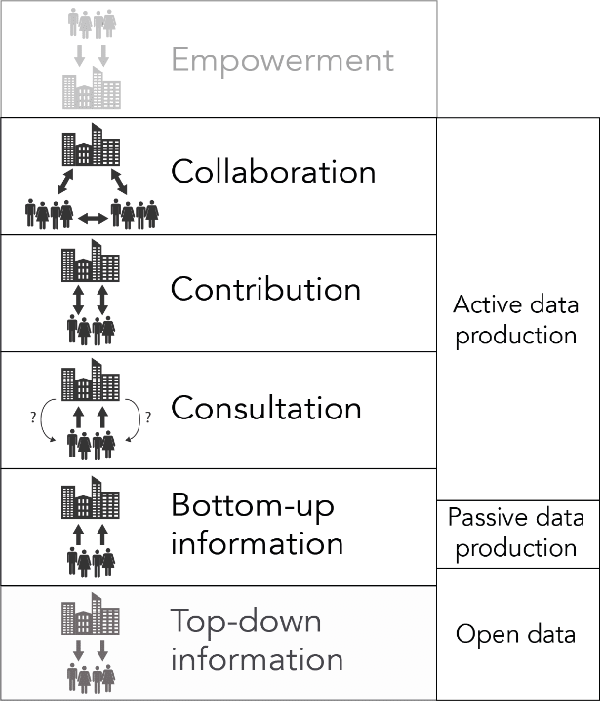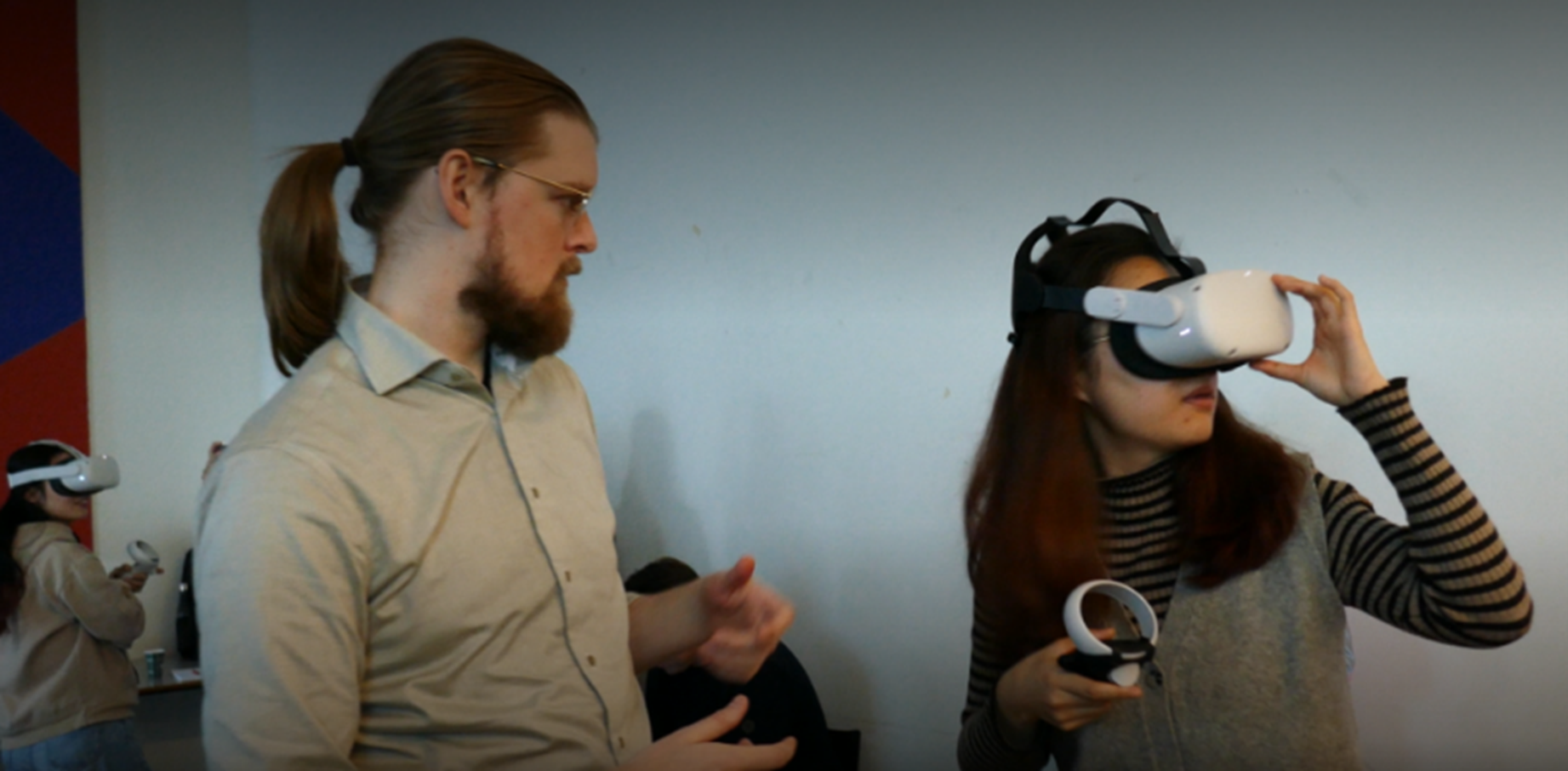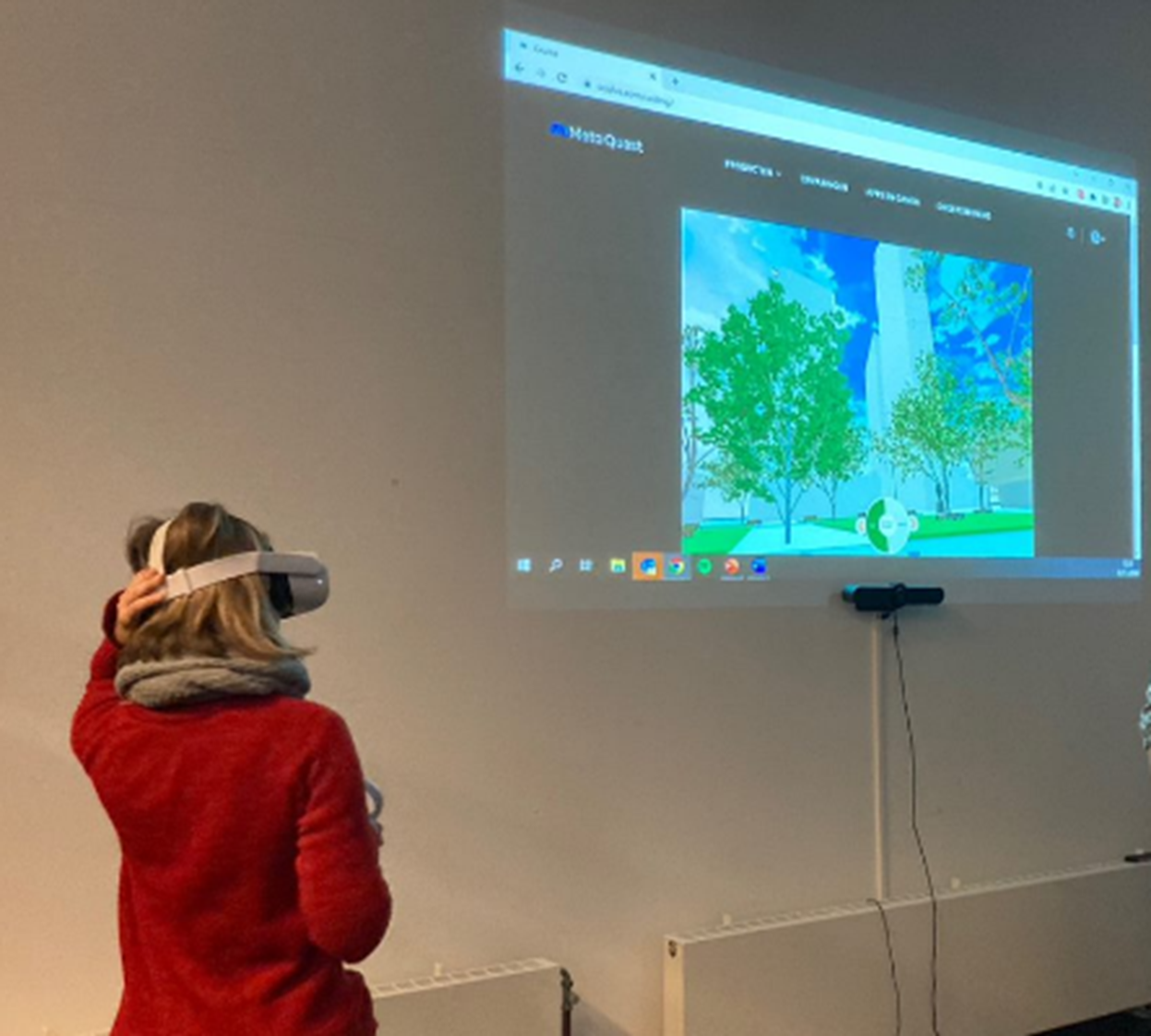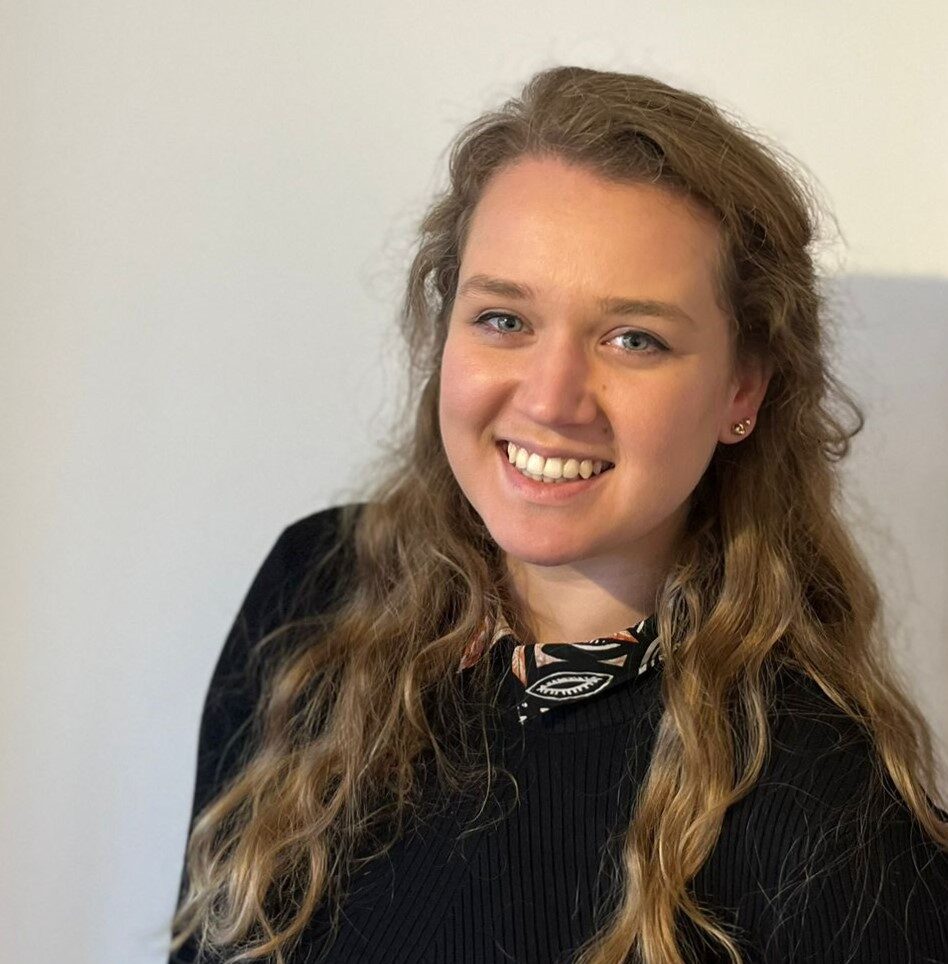Use of an Immersive Virtual Reality tool for Designing Healthy Public Spaces in a Participatory Way
Editie: 30 - Shifts in the Real Estate Industry
Published on: 28 maart 2023
Imagine yourself stepping into a virtual version of your future neighbourhood. It seems so highly realistic that you can immediately point out the best location for a building, bench or tree. Consequently, you can even see whether this composition generates enough light on the open space or would nudge you to walk more often. In an ongoing research project “CoHeSIVE”, funded by the EWUU alliance1 (universities of Utrecht, Wageningen and Eindhoven, and UMCU), a novel methodology is under development to allow citizens and urban designers to co-design healthy public spaces. Co-design is a particular type of participatory design whereby expert designers and laymen can work together in collective creative ways throughout the design process to achieve a shared design goal [1]. In CoHeSIVE, the co-design methodology will be supported by an immersive VR tool that can improve participation between different parties (i.e., designers, citizens, local authorities) in the urban design and decision process.
Involvement of citizens in decision making processes
Currently, the majority of the population in the Netherlands lives in cities while about only 10% of citizens lives in the inner areas of large cities [2]. Although inner cities are seen as engines for socio-economic and cultural developments, it seems they are not considered attractive and liveable by all population groups such as families with young children and elderly. Moreover, large cities in the Netherlands face challenges such as urbanization, housing shortages and sustainability measures. To respond to these challenges, city authorities aim to optimize the use of inner cities by increasing the density, where more people can work, live and recreate. This aim creates a new challenge of developing healthy dense inner cities, especially regarding the public realm. Urban public spaces, both natural and built, can contribute to the well-being of citizens, as they can enable users to connect with their environment, themselves, and each other, through hosting informal gatherings of individuals beyond the realms of home and work [2]. Since urban public spaces vary by their use and their users, urban designers and local authorities need to consider a place-specific approach and the variety of users and users’ needs for well-being.
In traditional urban design practices citizens have limited scope to actively take part in the different stages of the design process, especially in the design ideation and generation stage. The design process faces numerous challenges, such as the duration and costs, the limitation in the number of participants, the lack of representativeness and the lack of shared motivation or understanding among citizens. Hence, most of the laymen participation in the design processes are limited to consultation (figure 1), in which one-way feedback from participants to designers is asked but the received feedback by participants on the implication and impact upon the concerned project is minimal [3, 4]. Digital technologies are effectively the new ways of coping with these shortcomings. According to recent empirical findings by Toukola and Ahola [5], digital tools can assist the participatory design process by improving communication efficiency, enhancing non-professionals understanding and engaging participants to provide their opinions. Ergo, participation processes supported with digital tools may increase the likelihood of a successful and supported project implementation as the project is generally well-suited to citizen’s needs.

Figure 1: Ladder of citizen participation that includes digital participation methods [source: Hasler et al. (2017)]
Participatory urban design techniques
In urban participatory processes, designers use varied tools and techniques, both digital and non-digital, to communicate with the citizens. Techniques dealing with urban issues often depend either on verbal design representations, digitally produced images or three-dimensional artefacts [6]. However, these techniques provide a static and often rudimentary representation of the environment [7]. As a result, the lack of ability to perceive the design and understand the implications of different decisions hinder non-expert citizens in the feeling of control and increased influence in the decision-making process. To establish a collaborative participation process, or co-design process, equal opportunity and reducing inequalities should be ensured between participating parties, starting from the ideation phase. Henceforward, urban designers and laymen can collaboratively achieve a shared design goal. Thus, the artefacts of the design tools should have the capability to represent people’s imagination communicatively so that co-designers, including citizens, could perceive and discuss the generated ideas and effects at the same time.
The emergence of main-stream virtual reality (VR) technologies allows for a paradigmatic shift in how environmental processes and changes are communicated and understood. Users actively need to move around, similar to what they do in the real-world, and perceive and interact with digital objects by performing gestures that are natural to them [8, 9]. Consequently, designers and citizens ground their understanding not exclusively in data and traditional techniques but in embodied experiences. Extending VR to Immersive-VR (IVR), such as head-mounted displays (HMDs), provides the user with a real-time interaction with the design and therefore ensures, to some extent, a real sense of presence. Presence is the degree to which users feel as if they are present in the displayed environment even though they are not physically there. Hence, it has been argued that as participants are more engaged in VR, it activates all the human perception, cognition, and emotion components, and they therefore make choices that better resemble their stated preference [10]. These digital capabilities may assist in associating stimuli and behavioural reactions, and hence well-being.
Immersive Virtual Reality (IVR) Participation Tool
To date, research on how the use of (I)VR for urban design can involve citizens as collaborators to the design process is only limited. In the EEWU project “CoHeSIVE”, an Immersive Virtual Reality (IVR) tool is under development and regularly tested in participatory workshops for co-designing healthy public spaces (figure 2). The tool includes an innovative methodology to incorporate intuitive design decisions from co-designers. To measure preferences for new, not yet existing design scenarios, participants can adapt a given base level scenario according to their preferences by altering the attribute profile within in the tool. Base level design scenarios are pre-composed with different design element combinations (i.e., buildings, greenery). The tool automatically generates new design scenarios when participants change the attribute profile, which may involve multiple attributes at the same time or just a single attribute. The participants may not be satisfied with the result, based on their preference for a healthy environment, and again change levels of particular attributes where the system regenerates a new design until the participant/user is satisfied with the design.


Figure 2: Interaction of participations with participation tool in participatory co-design workshops [source: Author]
The immersive experiment setup is developed to leverage citizens and designers to participate together in an urban design discussion to understand individual’s preferences and the possible design implications per scenario. The tool can run standalone or as a real-time collaboration platform for better design decisions in the earlier stages of the design process, by means of interactive designing or for the assessment of multiple design possibilities in the virtual space. Results from the pilot tests, concerning the redesign of an urban public plaza, indicated that participants can interpret and design urban forms through the IVR tool. Moreover, it showed the capability of the IVR tool to initiate a conversation and negotiation between citizens and designers towards meaningful design outcomes. Accordingly, such an IVR tool will not only enable understanding individuals’ preferences, it can in the future become also a new form of a design-decision making platform where co-designers (non-experts and designers) can fully learn about the spatial (and possibly non-spatial) implications of planning and design decisions in a shared virtual environment.
All in all, digital tools create an opportunity to reshape the urban design process by improving interactions and information exchanges among urban designers and citizens, which are central in the move towards more healthy and liveable cities.
1 The CoHeSIVE project (Co-design Healthy Public Spaces with Immersive Virtual Environments) is a seed-fund project funded by the alliance EWUU. This article is powered by valuable contributions from EEWU colleagues: Suzan Evers (responsible researcher – TU/e), dr. Gamze Dane (PI – TU/e), prof. dr. Theo Arentze (TU/e), dr. ir. Pauline van den Berg (TU/e), prof. dr. Alexander Klippel (WUR), Timon Verduijn (WUR), dr. Indre Kalinauskaite (UMCU) and dr. Yvonne Vendrig (UMCU). For further information on the project: https://ewuu.nl/en/seedfund-march2022/
References:
[1] Sanders, E. B.-N., & Stappers, P.J. (2008). Co-creation and the New Landscapes of Design. Co-design, 4(1), 5-18.
[2] CBS. (2022). Kerncijfers wijken en buurten 2022. Statline open data. Retrieved from https://opendata.cbs.nl/#/CBS/nl/dataset/85318NED/table?ts=1677662772169
[3] Oldenburg, R. (1999). The great good place. Cambridge, MA: Da Capo Press
[4] Faliu, B., Siarheyeva, A., Lou, R., & Merienne, F. (2018). Design and Prototyping of an Interactive Virtual Environment to Foster Citizen Participation and Creativity in Urban Design. In Advances in Information Systems Development; B. Andersson et al. (Eds.), Springer International Publishing: Cham, Germany, 2019, 55–78.
[5] Hasler, S., Chenal, J., & Soutter, M. (2017) Digital Tools as a Means to Foster Inclusive Data-informed Urban Planning. Civil Engineering and Architecture, 5(6), 230-239.
[6] Toukola, S., & Ahola, T. (2022). Digital tools for stakeholder participation in urban development projects. Project Leadership and Society, 3, 100053.
[7] Bannon, L., Bardzell, J., & Bodker, S. (2018). Reimagining participatory design. Interactions, 26(1), 26-32.
[8] Shr, Y. H.. J., Ready, R., Orland, B., & Echols, S. (2019). How do visual representations influence survey responses? Evidence from a choice experiment on landscape attributes of green infrastructure. Ecological Economics, 156, 375-386.
[9] Birenboim, A., Ben-Nun Bloom, P., Levit, H., Omer, I. (2021). The Study of Walking, Walkability and Wellbeing in Immersive Virtual Environments. International Journal of Environmental Research and Public Health, 18, 364.
[10] Klippel, A., Sajjadi, P., Zhao, J., Wallgrün, J. O., Huang, J., and Bagher, M. M. (2021). Embodied Digital Twins for Environmental Applications. ISPRS Ann. Photogramm. Remote Sens. Spatial Inf. Sci., V-4-2021, 193–200.
[11] Chowdhury, S., & Hanegraaf, J. (2022) Co-presence in remote VR co-design. Proceedings of the 27th International Conference of the Association for Computer Aided Architectural Design Research in Asia (CAADRIA), 2, 465-474.
Over de auteur: Suzan Evers
| Suzan Evers graduated from TU/e in 2022 after completing a master’s degree in Architecture, Building & Planning with a specialisation in Urban Planning and Design. After her graduation, which was focused on Health and Mobility: The 15-minute City, she started working as a researcher on Healthy Living Environments at TUe’s Faculty of Built Environment. |  |
Mail the editors